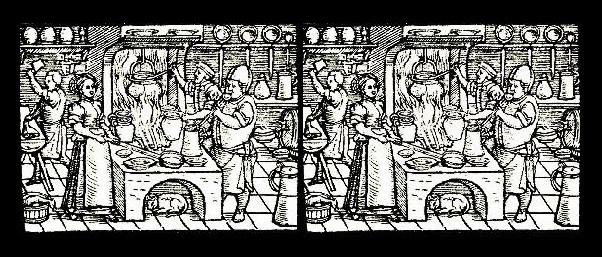Tudor Food
Posted on 23rd January 2021
As in other historical periods the food eaten depended on wealth and status, with the poor having less choice than the wealthy; the Tudors were no different.
The wealthy Tudor diet was dominated by meat, with as much as seventy-five percent of it being meat; although there were laws that prevented meat being eaten on certain days including Fridays, some Wednesdays and at Lent. Much of the meat was boiled or roasted and often seasoned and made into pies.
Wealthy households had their own gardens growing herbs including Parsley, Rosemary, Mint, Sage and Thyme. They also grew fruit in their own orchards.
During the Tudor period, imported spices became popular, but were very expensive, therefore only available to the wealthy. These included Saffron, Cayenne, Paprika, Nutmeg, Ginger, Mustard and Turmeric.
As sugar was expensive, food was mainly sweetened with honey.
Wealthy - Access to many meats, giving them a varied meat diet. These included;
Pork, Beef and Venison
Wild Boar, Beaver and Badger
Rabbit and Chicken
Duck and Swan
Sparrow, Blackbird and Lark
Pheasant, Peacock and Pigeon
They were able to keep their livestock all year round and only kill them when they needed them, therefore they always ate fresh meat.
Fish were also eaten including;
Perch and Pike
Salmon, Trout and Roach
These were dried and salted to preserve them, then either boiled, fried, grilled or baked. It was the law to eat fish on certain days.
Although fresh vegetables could be grown in season, wealthy Tudors rarely ate vegetables, and certainly not if they were raw, as they believed vegetables were the food of the poor.
Vegetables eaten included;
Onions and Leeks
Cabbage and Spinach
Turnips, Cauliflower and Carrots.
Sometimes a meat stew (Pottage) was made with Beef or Chicken and vegetables.
Bread was served at every meal with Manchet being the favoured bread of the wealthy as it was made with white flour.
Fruits eaten included;
Pomegranates and Peaches
Oranges and Apples
Strawberries, Pears and Plums
Blackberries, Raspberries and Cherries.
Many of these were eaten in season, and some were pickled or preserved in honey.
Poor - May have had access to some meat including;
Beef, Mutton and Chicken
Rabbits they caught themselves
The very poor were lucky if they were able to afford a little bacon.
Poorer families could not afford to keep livestock all year round so much of their meat was salted to preserve it for eating through the winter.
Only fish they caught themselves were eaten.
The poor lived mainly on stew (Pottage) made of vegetables, grains and maybe a little bacon or beef.
Vegetables were much more prominent in the diet of the poor as they were able to grow them themselves.
Many of the fruits used were ones that grew in the wild including;
Blackberries
Apples and Plums
These were often made into pies and tarts.
Herbs were still used in cooking by the poor, but less spices were available to them due to the cost. Honey was used to sweeten the food.
Even for the poor, bread was eaten at every meal, however not the quality of wealthy family’s bread.
The middle class ate Yeoman’s bread made from wholemeal. The very poor ate Carter’s bread made from rye and wheat.
In the Tudor period, it was unsafe to drink the water, so both the poor and wealthy drank ale. Sometimes it was flavoured with berries and pepper. As no preservatives were used, this drink was made fresh every day. Sometimes a drink called mead was made with honey.
Imported wine was also available, but this was expensive so only drank by the wealthy.
Tagged as: Junior Tudors
Share this post:





